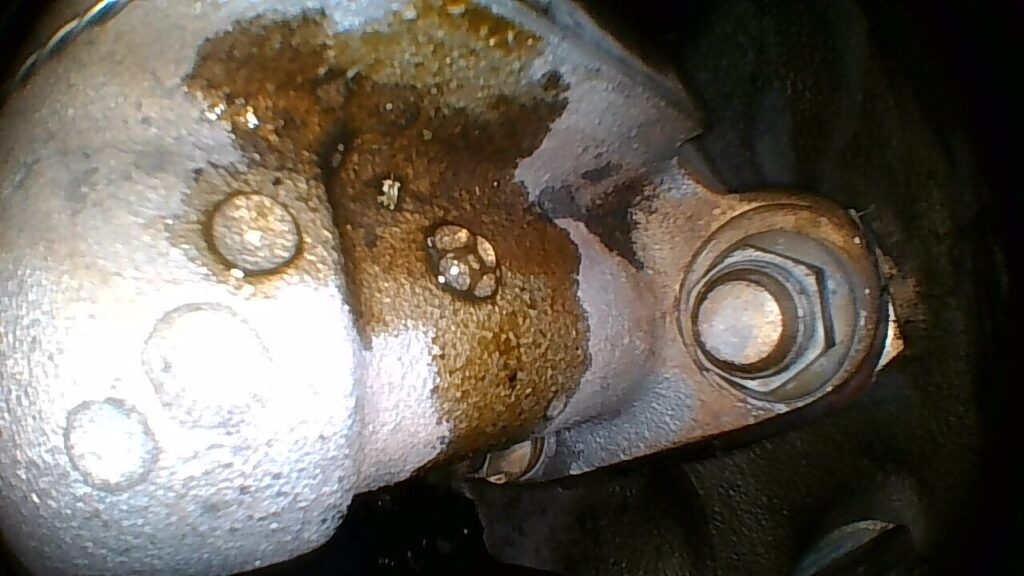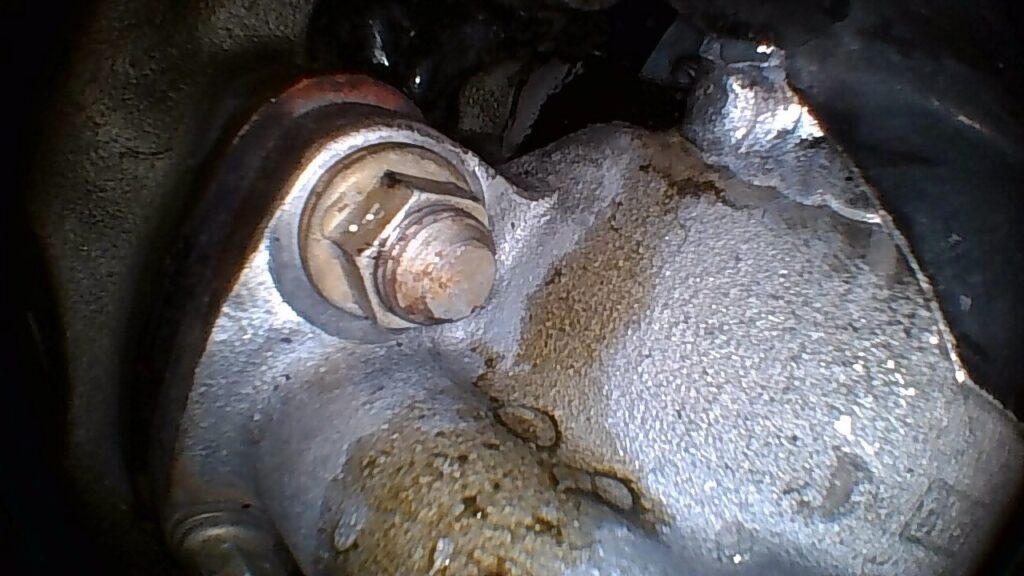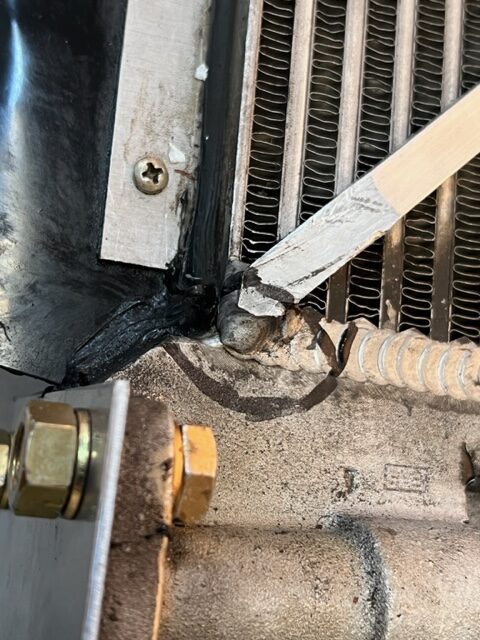Mettez-vous hors ligne avec l'application Player FM !
218 – Engine Oil was Seeping Out of the Top Cowling
Manage episode 358229596 series 1028900
Not long ago, there was an oil leak on the right engine of a Cessna 414. The leak was significant enough to come out the louvers on the top cowling in flight. There was oil all over the rear inboard area of the engine, so the big question was, “Where is the oil leak coming from,” or “Where is the source?”

With so many possibilities, it was difficult to find the leak.
After multiple cleanings and ground runs, it was becoming more clear.
It was still however, hard to be certain. It seemed to be coming from the inboard forward base of the oil cooler. A flashlight and small mirror were somewhat helpful to see the area:

The borescope was also helpful to take a closer look:


Finally, after making the best evaluation I could without disassembling anything, I told the owner I was fairly certain the oil cooler was leaking… it seemed there might be a small crack in the oil cooler.
The annual inspection was already scheduled for this airplane, so it made a good time to verify the oil leak. The owner is an A&P, and he removed the oil cooler himself. I was hoping I had not steered him down the wrong path on this one!
He discovered it’s not an easy task to remove the oil cooler from his engine, but he persisted and got it done.
He sent me a text message and told me he had removed the oil cooler and when they first looked at it, he was not sure it was cracked. But after pressurizing it with 5 pounds of air pressure, the leak was obvious.
About the oil cooler, he told me “I tell you it was a job getting that off.”
The black circled area is where the crack was:


And here’s the really fun part… watch this video to see the bubbles confirming the source of the oil leak:
Here’s the engine after the oil cooler was removed… definitely “major surgery!”

This was the main maintenance topic in this week’s podcast, and we also talked about these items as well:
- Aerostar voltage regulator adjustment.
- Alternator charging system troubleshooting.
- Our upcoming trip to Maui!
Thanks for listening, and we’ll see you in the next episode!
The post “218 – Engine Oil was Seeping Out of the Top Cowling” appeared first at AirplaneOwnerMaintenance.com
153 episodes
Manage episode 358229596 series 1028900
Not long ago, there was an oil leak on the right engine of a Cessna 414. The leak was significant enough to come out the louvers on the top cowling in flight. There was oil all over the rear inboard area of the engine, so the big question was, “Where is the oil leak coming from,” or “Where is the source?”

With so many possibilities, it was difficult to find the leak.
After multiple cleanings and ground runs, it was becoming more clear.
It was still however, hard to be certain. It seemed to be coming from the inboard forward base of the oil cooler. A flashlight and small mirror were somewhat helpful to see the area:

The borescope was also helpful to take a closer look:


Finally, after making the best evaluation I could without disassembling anything, I told the owner I was fairly certain the oil cooler was leaking… it seemed there might be a small crack in the oil cooler.
The annual inspection was already scheduled for this airplane, so it made a good time to verify the oil leak. The owner is an A&P, and he removed the oil cooler himself. I was hoping I had not steered him down the wrong path on this one!
He discovered it’s not an easy task to remove the oil cooler from his engine, but he persisted and got it done.
He sent me a text message and told me he had removed the oil cooler and when they first looked at it, he was not sure it was cracked. But after pressurizing it with 5 pounds of air pressure, the leak was obvious.
About the oil cooler, he told me “I tell you it was a job getting that off.”
The black circled area is where the crack was:


And here’s the really fun part… watch this video to see the bubbles confirming the source of the oil leak:
Here’s the engine after the oil cooler was removed… definitely “major surgery!”

This was the main maintenance topic in this week’s podcast, and we also talked about these items as well:
- Aerostar voltage regulator adjustment.
- Alternator charging system troubleshooting.
- Our upcoming trip to Maui!
Thanks for listening, and we’ll see you in the next episode!
The post “218 – Engine Oil was Seeping Out of the Top Cowling” appeared first at AirplaneOwnerMaintenance.com
153 episodes
Tous les épisodes
×Bienvenue sur Lecteur FM!
Lecteur FM recherche sur Internet des podcasts de haute qualité que vous pourrez apprécier dès maintenant. C'est la meilleure application de podcast et fonctionne sur Android, iPhone et le Web. Inscrivez-vous pour synchroniser les abonnements sur tous les appareils.




